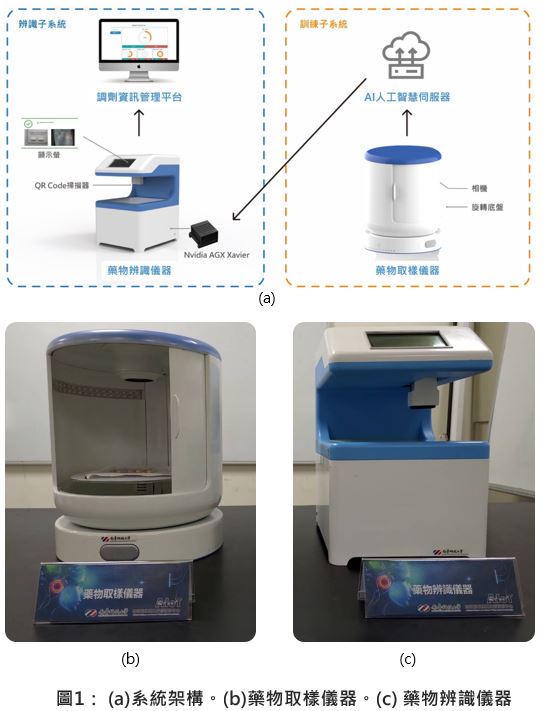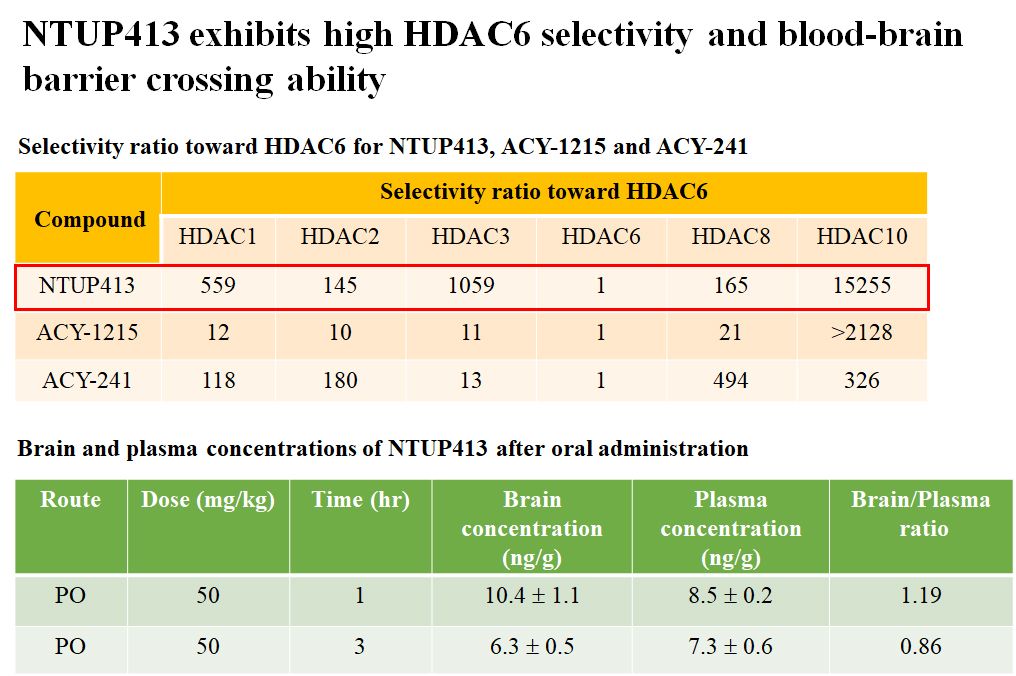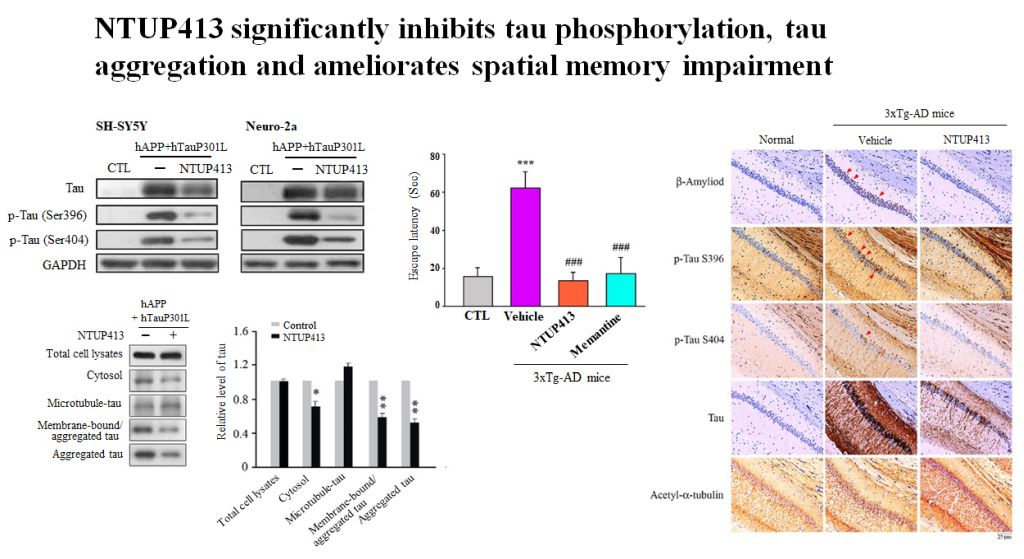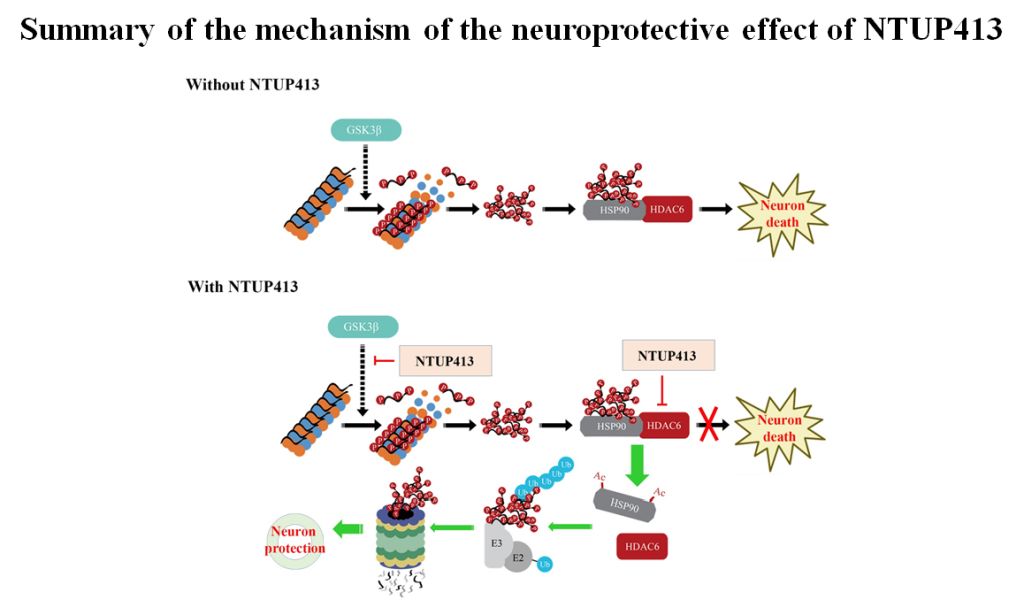| Technical Name | Development of selective histone deacetylase 6 inhibitor for the treatment of Alzheimer's disease | ||
|---|---|---|---|
| Project Operator | School of Pharmacy, National Taiwan University | ||
| Project Host | 楊家榮 | ||
| Summary | This technology is exploring a new use for the NTUP413 in Alzheimer's disease, which has been shown to be a potential therapeutic agent for neurodegenerative diseases. |
||
| Scientific Breakthrough | NTUP413 is a high selective HDAC6 inhibitor and well tolerated without cardiac toxicity. It decreases the levels of phosphor-tau/aggregation of tau, and reduces neuronal apoptosis. NTUP413 can ameliorate learning and memory impairment in animal models. Oral administration NTUP413 can cross the blood-brain barrier. It shows that NTUP413 has the potential to develop as an AD therapeutic drug. |
||
| Industrial Applicability | NTUP413 has potent HDAC6 inhibitory activity and high selectivity for HDAC6, which can reduce side effects. Oral administration NTUP413 can penetrate blood-brain barrier; it can reduce tau phosphorylation/aggregation and significantly ameliorate learning and memory impairment by in vitro and in vivo models. It shows that NTUP413 has the potential to further develop as an AD therapeutic drug. |
||
| Keyword | HDAC6 Selective HDAC6 inhibitor Alzheimer's disease tau phosphorylation tau aggregation blood-brain barrier learning and memory impairment amelioration dementia neurodegenerative disease neuroprotective effect | ||
- d01423203@ntu.edu.tw
other people also saw







